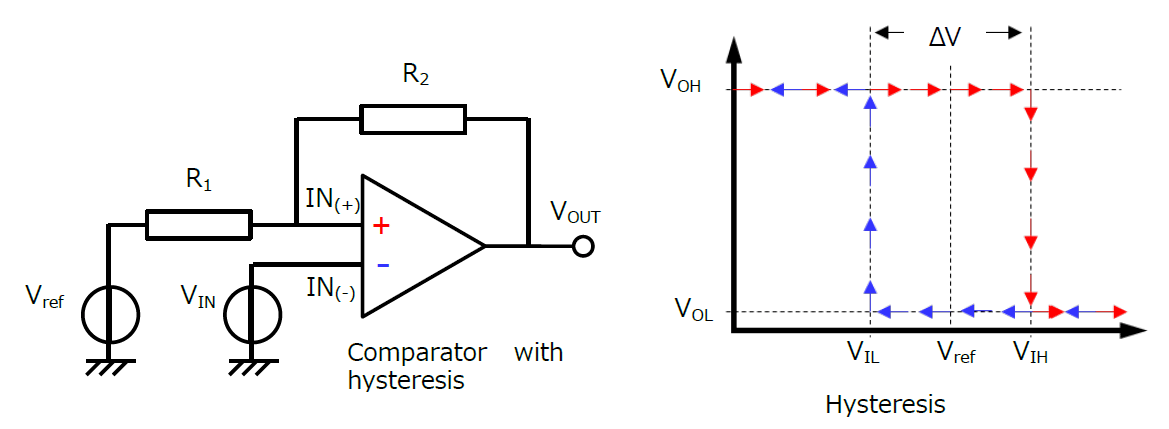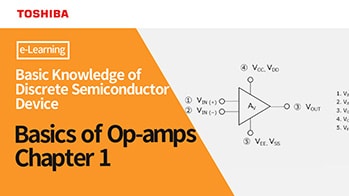- General Top
- SEMICONDUCTOR
- STORAGE
- COMPANY
-
My ToshibaSemicon
- Semiconductor Top
-
ApplicationsAutomotive
Body Electronics
xEV
In-Vehicle Infotainment
Advanced Driver-Assistance Systems (ADAS)
Chassis
IndustrialInfrastructure
BEMS/HEMS
Factory Automation
Commercial Equipment
Consumer/PersonalIoT Equipment
Healthcare
Wearable Device
Mobile
Computer Peripherals
-
ProductsAutomotive Devices
Discrete Semiconductor
Diodes
Transistors
Logic ICs
Analog Devices
Digital Devices
Wireless Devices
※
: Products list (parametric search)
Power SemiconductorsSiC Power Devices
※
: Products list (parametric search)
Isolators/Solid State RelaysPhotocouplers
Digital Isolators
Solid State Relays
Fiber Optic Transmitting Modules
※
: Products list (parametric search)
MOSFETsIGBTs/IEGTsBipolar Transistors※
: Products list (parametric search)
Diodes※
: Products list (parametric search)
MicrocontrollersMotor Driver ICsIntelligent Power ICs※
: Products list (parametric search)
Power Management ICsLinear ICs※
: Products list (parametric search)
General Purpose Logic ICsLinear Image SensorsOther Product ICsOther Product ICs
※
: Products list (parametric search)
-
Design & Development
Design & Development
Innovation Centre
At the Toshiba Innovation Centre we constantly strive to inspire you with our technologies and solutions. Discover how to place us at the heart of your innovations.
-
Knowledge
Knowledge
Highlighted Topics
Further Materials
Other
- Where To Buy
- Part Number & Keyword Search
- Cross Reference Search
- Parametric Search
- Stock Check & Purchase
This webpage doesn't work with Internet Explorer. Please use the latest version of Google Chrome, Microsoft Edge, Mozilla Firefox or Safari.
require 3 characters or more. Search for multiple part numbers fromhere.
The information presented in this cross reference is based on TOSHIBA's selection criteria and should be treated as a suggestion only. Please carefully review the latest versions of all relevant information on the TOSHIBA products, including without limitation data sheets and validate all operating parameters of the TOSHIBA products to ensure that the suggested TOSHIBA products are truly compatible with your design and application.Please note that this cross reference is based on TOSHIBA's estimate of compatibility with other manufacturers' products, based on other manufacturers' published data, at the time the data was collected.TOSHIBA is not responsible for any incorrect or incomplete information. Information is subject to change at any time without notice.
require 3 characters or more.
How can I provide hysteresis (schmitt trigger) for a comparator?

Generally, comparators* are used to determine whether an input voltage is higher or lower than a reference voltage. In a noisy environment, a slowly changing input or an input close to the threshold voltage might cause the output to cross VOH or VOL repeatedly. This undesirable situation can be avoided by using a comparator with a dead band (ΔV), or more specifically, a comparator with different positive-going (VIH) and negative-going (VIL) thresholds as shown in Figure 1.
The effect of having two threshold values depending on the prior state is called a hysteresis characteristic.
Although there are several types of circuits that provide a comparator with hysteresis (schmitt trigger), what they have in common is a positive feedback loop from the output to the input of the comparator. Figure 2 shows the simplest comparator with hysteresis. It is assumed that the comparator has a push-pull output with the ideal characteristics (i.e., infinite input impedance and zero output impedance), and that the output impedance of the reference power supply is zero.
Suppose that a voltage lower than VIL is applied to the IN(-) input. At this time, the output voltage is equal to VOH. This voltage is fed back to the IN(+) input via R2. At the same time, Vref is also applied to the IN(+) input via R1. Since the comparator has infinite input impedance, the voltage of IN(+) is calculated as follows:
VIN(+) = (VOH – Vref) x R1 / (R1 + R2) + Vref (1)
Since VOH = VCC, Equation 1 indicates that the output voltage of the ideal comparator is higher than Vref. Therefore, once the output transitions to logic High, it becomes difficult for the output to return to logic Low. Let the voltage of IN(+) at this time be VIH.
Next, suppose that a voltage higher than VIH is applied to the IN(-) input. Then, VOUT transitions to logic Low (VOL).
At this time, VIN(+) is calculated as follows:
VIN(+) = (VOL – Vref) x R1 / (R1 + R2) + Vref (2)
Since VOL is lower than Vref, the first term on the right-hand side of this equation is negative. Hence, VIN(+) is lower than Vref.
Therefore, once the output transitions to logic Low, it is necessary to apply an even lower voltage to VIN(+) in order to make the output transition back to logic High.
In this way, an op-amp comparator with positive feedback has hysteresis.
From Equation 1 and Equation 2, the hysteresis range (ΔV) is calculated to be (VOH – VOL) x R1 / (R1 + R2) centered around Vref.
* Although op-amps and comparators have almost the same internal configuration, comparators do not contain a phase compensation capacitor whereas op-amps always require one. Since comparators are not generally used with negative feedback, they do not need a capacitor to make negative feedback less prone to oscillation. This capacitor reduces the response speed of op-amps. Care should be exercised regarding the response speed when an op-amp is used as a comparator.
Related Links
The following documents also contain related information:



